Contents
These installation instructions for Linux are extremely verbose and intended for users who are not familiar with the Linux operating system or who have little or no experience using such a system. If you are an experienced Linux user, installing QCAD is a simple one-step procedure consisting of running the downloaded installer file from your favourite file manager or terminal.
Please note that Linux is not an operating system for the faint-hearted. You will have to invest some time to very carefully follow the instructions below step by step.
Accessing your Download Page
After your purchase, you have received an e-mail with the subject Order / Commande / Bestellung [order number] where [oder number] is your order number.
Find that e-mail now in your e-mail program or in your web based e-mail service and click on the download link in that e-mail to show your download area.
If you cannot find this e-mail, please check also your spam or bulk e-mail folder.
If you still cannot find that e-mail, please follow our detailed instructions for downloading QCAD.
At this point, you should have your download area open in your browser.
This should look similar as shown here:
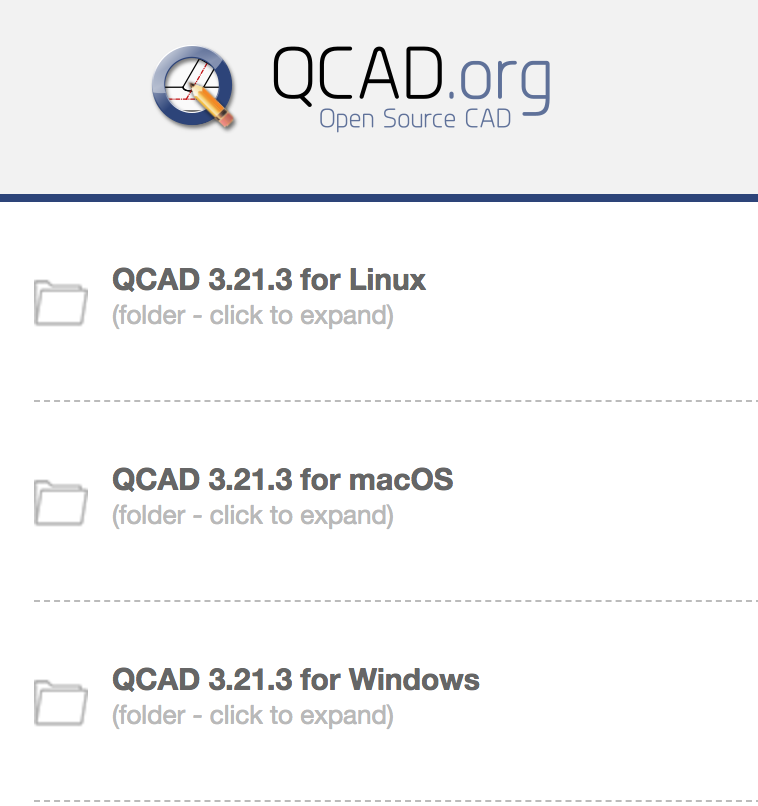
Do not proceed if you do not have this page open in your browser.
32bit or 64bit?
Next you need to find out if you are running a 32bit or a 64bit Linux operating system. Note that the actual architecture of your CPU (32bit or 64bit) is not relevant. You need to find our if you have a 32bit or a 64bit operating system. Depending on your exact Linux distribution, there are more or less painful ways to find this out:
- Ubuntu 13, 14, 15:
- Click on the gear icon at the top right and click About This Computer:
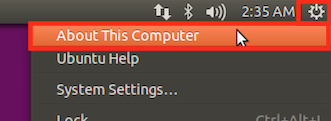
- Check under OS Type if you are using a 32bit or a 64bit system:
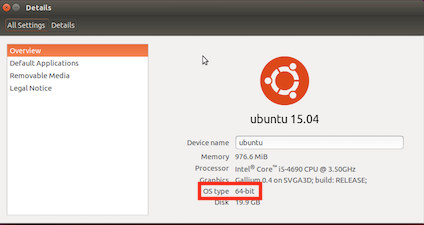
- Ubuntu 12:
- First you need to open System Settings. This can be done either in the dash, or by going to the gear icon (top right, see above). From there you need to open System Info. Under the Ubuntu Logo and Version Number, a line will list OS type 32bit or 64-bit.
- All other distributions including older Ubuntu versions:
- You need to use what is called a terminal or console application. This is a program that can be used to execute commands on your operating system. Look under Applications > Accessories or similar for an entry labeled Terminal:
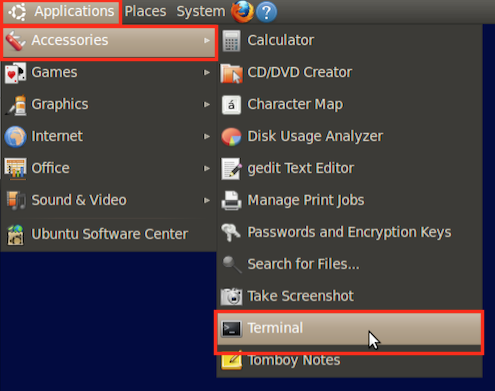
- Once you see the terminal application, enter this exact text:
uname -m
That is uname, followed by a space, a dash (-) and a small letter m.
Once you are convinced that you have entered this exact text string correctly, press the enter key on your keyboard. This is the key a the right of your keyboard you usually use to start a new line when typing text into a text editor. It is typically labeled Enter or Return or with a symbol that looks like this: ↵ - The terminal will now show some information.
- If that information is x86_64, you are using a 64bit Linux system:
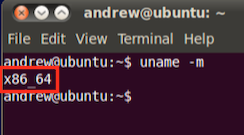
- If the information is i686, you are using a 32bit Linux system:
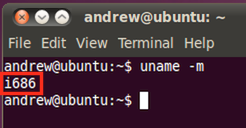
- Write down what system you are using and close the terminal application clicking the red x symbol at the top left.
At this point, you should know if you are running a 32bit or a 64bit operating system.
Do not proceed if this is not the case or you are not sure about this.
Downloading the Correct File
Please click on the QCAD 3.21.3 for Linux folder to expand it. Depending on the current version of QCAD, the version number might be different.
If you are using a 32bit Linux System, and then click the download link labelled QCAD Professional Linux 32bit (Installer):
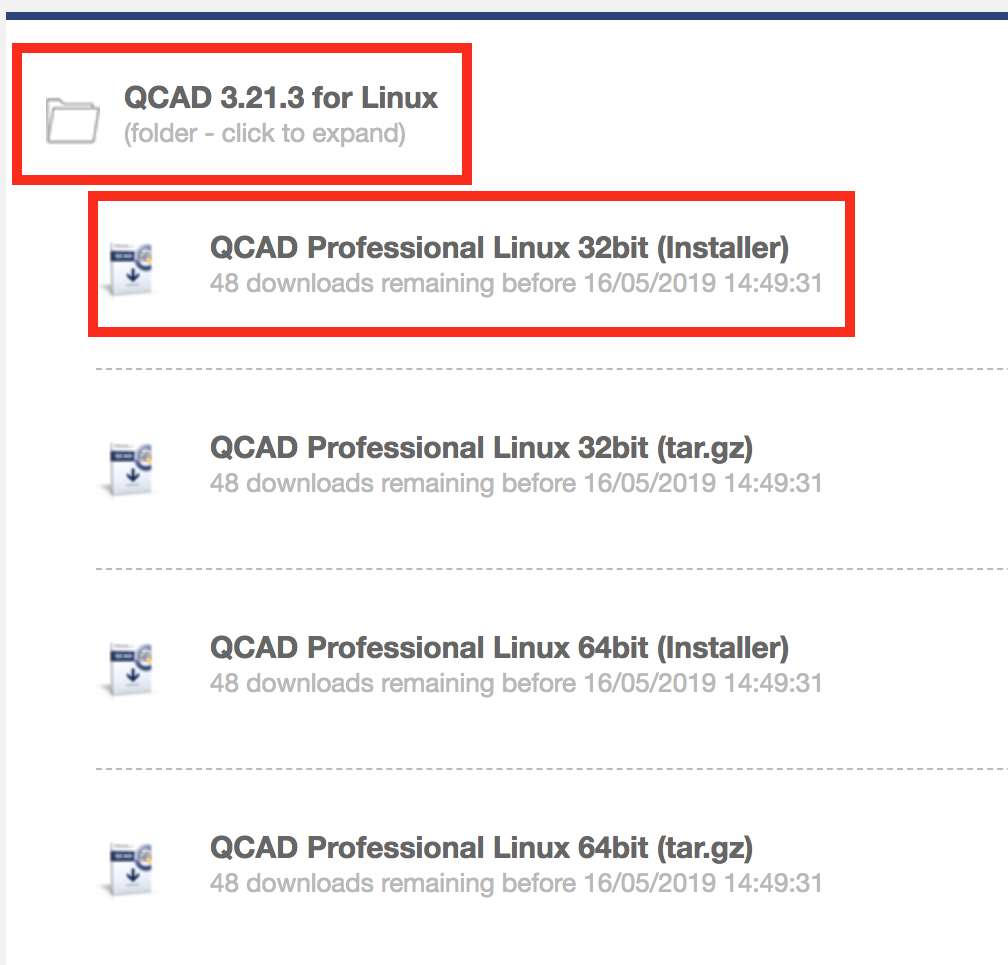
If you are using a 64bit Linux System, and then click the download link labelled QCAD Professional Linux 64bit (Installer):

Depending on your browser preferences, your download will now start or you will be asked where you want to save the file. If you are asked where you want to save the file, save it to your desktop, so you can find it after downloading. If you are not asked, the file will most likely be saved in the Downloads folder of your home directory.
At this point, you should have downloaded the correct file for your system.
The file should be visible on your desktop or you should know where to find it on your disk.
Do not proceed if you cannot download the file or you cannot find your downloaded file on disk.
Making the Downloaded File Executable
To protect you from accidentally executing a downloaded file, Linux has made the downloaded file non-executable. This means that we now need to explicitly make it executable again.
Like all things Linux, it greatly depends on the distribution and distribution version how this can be done:
- Ubuntu:
- Right-click on the downloaded file on your Desktop or in your Downloads folder and click Properties:
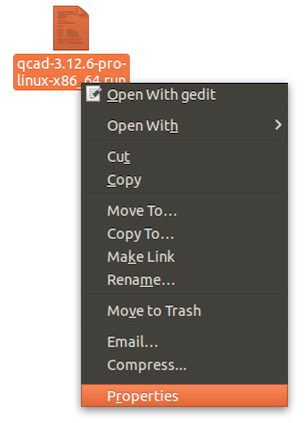
- Switch to the Permissions tab and tick the check box Allow executing file as program:
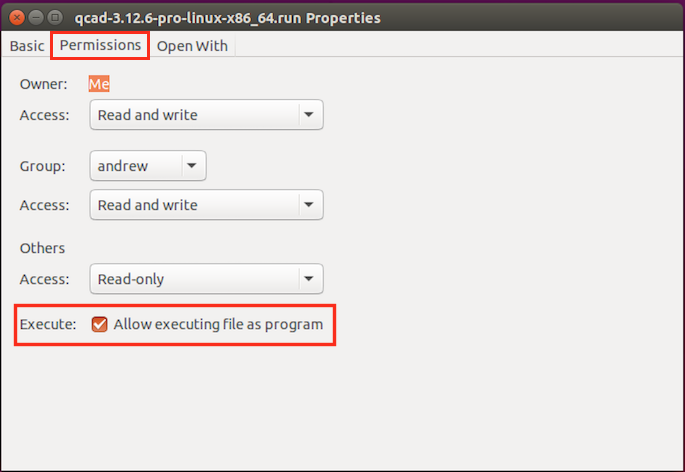
Do NOT change any of the other settings. - Click the OK button. If the dialog does not have an OK button, you can simply close the dialog clicking the X button at the top left.
- Do NOT double-click the downloaded file at this point. It will likely not work but open a text editor which is not what we want to do.
- Other Linux distributions:
- Other Linux distributions should have a similar way to make a file executable.
You might have to try different options or search the Internet for a way to do this.
Search for your Linux distribution name followed by how to make a file executable.
At this point you should have the downloaded file on your Desktop or in your Downloads folder and it should be executable.
Allowing Executable Files to be Executed
Your file manager will likely open a text editor when double-clicking the downloaded file at this point. Since we do not want that, we need to tell the file manager that it should execute executable files.
Again, this greatly depends on your Linux distribution, version thereof as well as the file manager that is being installed and used:
- Ubuntu:
- Open the file manager, likely named Files:
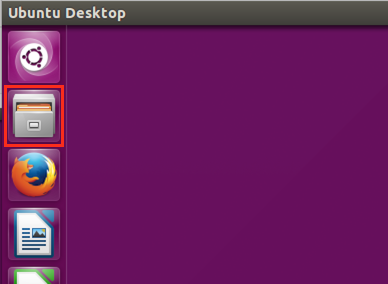
- Choose the menu Edit > Preferences. If the Edit menu is not visible, move the mouse close to the position, where it should be visible first (at the top). It should then appear.
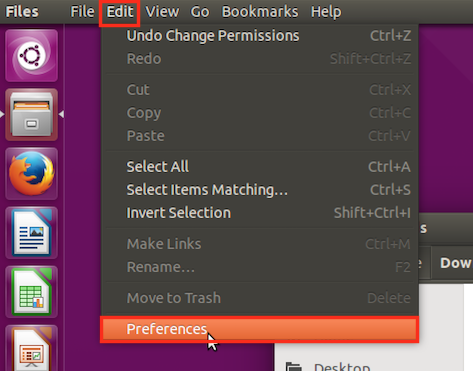
In other versions of the system, the menu might be located at the right: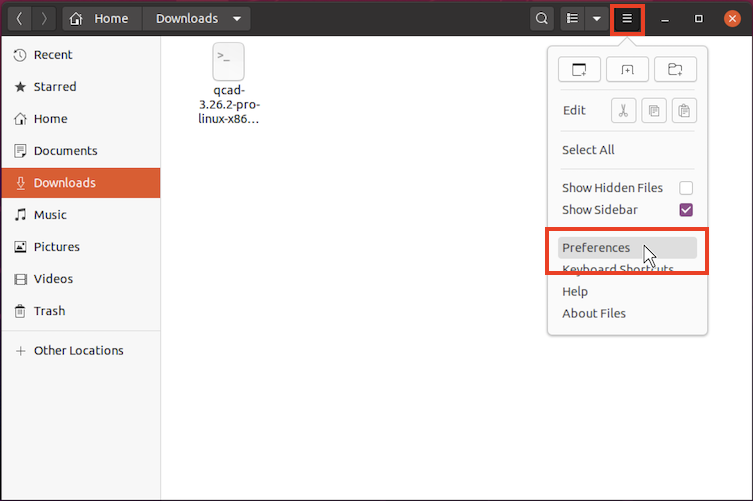
- Click on the Behavior tab of the preferences dialog and check the check box Ask each time or Ask what to do under Executable Text Files:
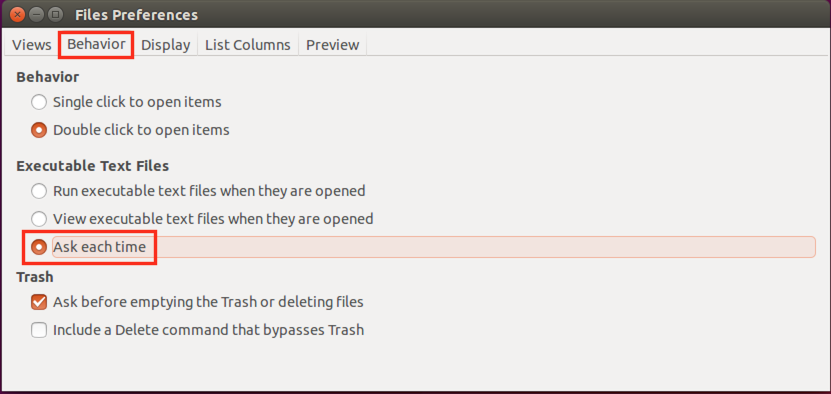
- Click the OK button or close the dialog if there is no OK button.
Your system and the downloaded file should now be ready for the installation of QCAD.
Installing QCAD
- Double-click the downloaded QCAD installer with the left mouse button.
- Your system will now show a dialog, asking you what to do with the file. Click the Run button:

- QCAD will now be installed on your system into a directory called opt in your home folder.
Running QCAD
The installer also creates a desktop icon which you can then use to launch QCAD by double-clicking it.
